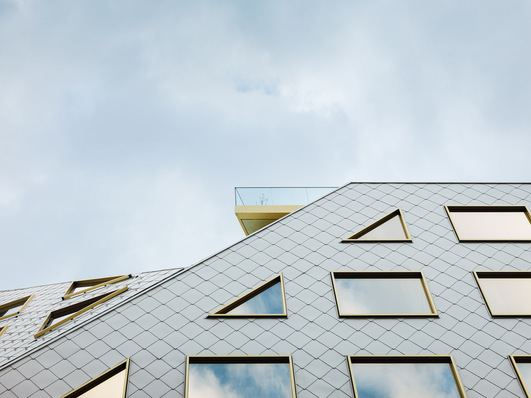The motivation for tradespeople and planners to use insulating glass units with blinds is varied, but follows the guiding principles of efficiency and sustainability in terms of material usage and costs. These primarily include construction time optimisation and construction cost savings.
See also: Roller shutter and sun protection systems easily configured
Both are excellently served by the combination of product components: a blind integrated into the insulating glass. In addition, the installation of the glass and the system assembly in just one product (the insulating glass blind), which only needs to be realised by one trade (glazing). This generates a high level of efficiency in the planning and construction phase.
Sustainability is achieved in the utilisation phase at the latest, as the systems are virtually maintenance-free and the cleaning effort is reduced to cleaning the panes.
Securely protected blinds between the panes
In terms of susceptibility to wind, weather or actually vandalism, the combination product requires little to no repair thanks to the protected installation of the systems.
A new motif in the context of sustainability arises from the consideration of the time after use, in which the materials of aluminium and glass, which are hardly perishable due to the special installation situation, are almost 100 % recyclable or can be reused in another function.
Also score points with sustainability and optimised energy balance
An insulating glass blind with thinner and narrower slats without additional guide rails and with compact, low-voltage drive components also saves a considerable amount of resources compared to large-format external systems with 230 V AC voltage.
In terms of energy consumption, an integrated system has long been able to compete with an external system. The multifunctional product compensates for the slightly poorer value in terms of total energy transmission in the energy balance of a building simply because it continues to function fully even in difficult weather conditions, thereby reducing the cooling loads of the building technology around the clock.
In addition, the direct solar radiation via the glass surface provides passive energy gains during the winter months. The blind system itself can direct the incidence of light better due to its installation situation.
Also interesting: Shading system that also generates electricity
In order to achieve efficient and sustainable added value, it is therefore necessary to consider a multifunctional insulating glass unit from the planning stage through to installation and use. Glass suppliers, architects, planners and users can only gain from this approach.
www.isolette.de (German website)














